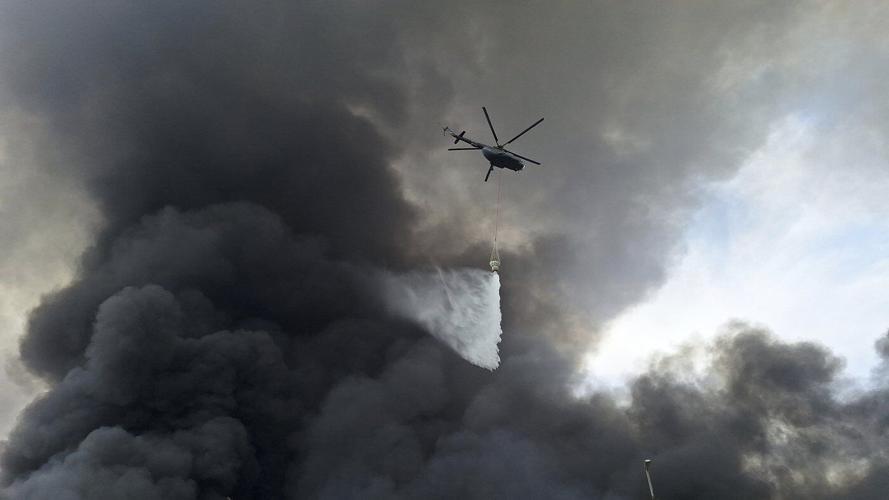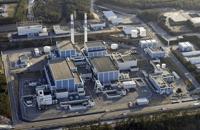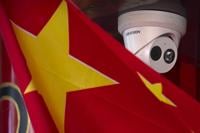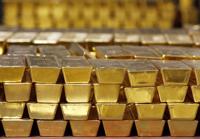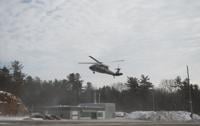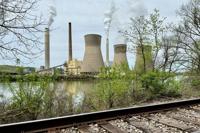DUBAI, United Arab Emirates (AP) — Iran's president visited those injured Sunday in a huge explosion that rocked one of the Islamic Republic's main ports, a facility purportedly linked to an earlier delivery of a chemical ingredient used to make missile propellant.
The visit by came as the toll from Saturday's blast at the Shahid Rajaei port outside of Bandar Abbas in southern Iran's Hormozgan province rose to 28 killed and about 1,000 others injured.
While Iran's military sought to deny the delivery of ammonium perchlorate from China, new videos emerged showing an apocalyptic scene at the still-smoldering port. A crater that appeared meters deep sat surrounded by burning smoke so dangerous that authorities closed schools and businesses in the area.
Containers appeared smashed or thrown as if discarded toys, while the burned carcasses of trucks and cars sat around the site.
“We have to find out why it happened,” Pezeshkian said during a meeting with officials aired by Iranian state television.
Authorities described the fire as being under control, saying emergency workers hoped that it would be fully extinguished later Sunday. Overnight, helicopters and heavy cargo aircraft flew repeated sorties over the burning port, dumping seawater on the site.
Pir Hossein Kolivand, head of Iran’s Red Crescent society offered the death toll and number of injured in a statement carried by an Iranian government website, saying that only 190 of the injured remained hospitalized on Sunday. The provincial governor declared three days of mourning.
Private security firm Ambrey says the port received missile fuel chemical in March. It was part of a shipment of ammonium perchlorate from China by two vessels to Iran, first reported in January by the Financial Times. The chemical used to make solid propellant for rockets was going to be used to replenish Iran’s missile stocks, which had been depleted by its direct attacks on Israel during in the Gaza Strip.
Ship-tracking data analyzed by The Associated Press put one of the vessels believed to be carrying the chemical in the vicinity in March, as Ambrey said.
“The fire was reportedly the result of improper handling of a shipment of solid fuel intended for use in Iranian ballistic missiles,” Ambrey said.
In a first reaction on Sunday, Iranian Defense Ministry spokesman Gen. Reza Talaeinik denied that missile fuel had been imported through the port.
“No sort of imported and exporting consignment for fuel or military application was (or) is in the site of the port,” he told state television by telephone. He called foreign reports on the missile fuel baseless — but offered no explanation for what material detonated with such incredible force at the site. Talaeinik promised authorities would offer more information later.
It’s unclear why Iran wouldn’t have moved the chemicals from the port, particularly after . That explosion, caused by the ignition of hundreds of tons of highly explosive ammonium nitrate, killed more than 200 people and injured more than 6,000 others. However, Israel did target Iranian missile sites where Tehran uses — meaning potentially that it had no place to process the chemical.
Social media footage of the explosion on Saturday at Shahid Rajaei saw reddish-hued smoke rising from the fire just before the detonation. That suggests a chemical compound being involved in the blast, like in the Beirut explosion.
Meanwhile on Sunday, Russian President Vladimir Putin deployed several emergency aircraft to Bandar Abbas to provide assistance, Iran's state-run IRNA news agency reported.

